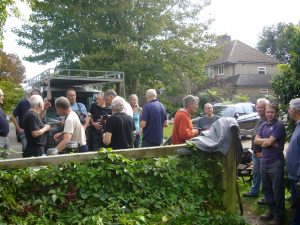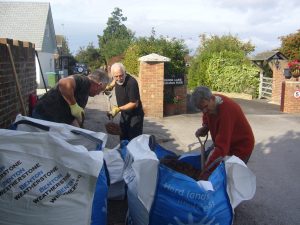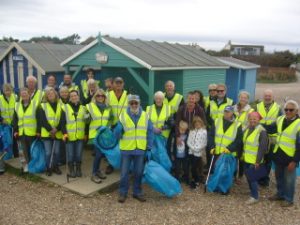At our September meeting James Sainsbury came along to give us an illustrated talk regarding the History of Cissbury Ring. James, an archaeologist from Worthing Museum and Art Gallery, began by explaining that Cissbury Ring, just north of Worthing, is the largest historic hill fort in Sussex dating back over 5,000 years. From the top views stretch from Brighton to the Isle of Wight.
A wonderful habitat for butterflies and flowers has been created here by centuries of continuous grazing. During the Neolithic period settlements were established and an extensive flint mining operation was carved out on the southern side of the hill and this is still evident today. In the early Bronze Age there is evidence of a ritual burial ground as two round barrows have been identified here.
Around 400BC the Iron Age Hill Fort was built and stood firm as a means of defence for the next 300 years, it encloses 26 hectares and originally had only two entrances, one at the eastern end and the other at the south-western end. After 100BC the interior of the fort was used for agriculture with rectangular fields being marked out with earthwork banks and terraces.There is also archaeological evidence of a settlement during the later Roman period where ramparts were heightened, possibly in fear of an attack by Danish hoards.
Although Cissbury Ring was recognised as having defensive qualities since these times no actual military activity took place until the Second World War. A large anti-tank ditch was excavated around the entire hill in 1940, and anti-aircraft guns were positioned across the highest part of the ridge within the hill fort. James demonstrated the military activity by showing us a photograph of scorch marks made by tank practice, left on the grassland.
Thankfully today Cissbury Ring is a peaceful place and ideal for walking and appreciating the countryside.
After a break for tea Tricia Hall delivered her popular Nature Notes by advising us that around 100 meadow pipits were seen on the Goring Gap and around 1,000 starlings on an electricity pylon. Tricia reported that the plastic collected during the September Beach Clean had been recorded and the results submitted to the Marine Conservation Society’s annual survey. Unusually two storks had been spotted firstly on the roof of ASDA and later on the Goring Gap, they have now moved further along the coast towards Pagham. At least one of the storks is from the Knepp Castle Estate and there is a program to reintroduce them nationally.
To conclude the meeting Ed Miller updated us with news that the planning application for a ninth residence at the former beehive cottage site is awaiting a decision by Arun DC. The four chalet bungalows proposed at 44, Ferringham Lane have issues with access yet to be resolved. The Arun Local Plan for the building of 1,000 homes per year over the next 15 years is currently with the Inspector awaiting approval.



